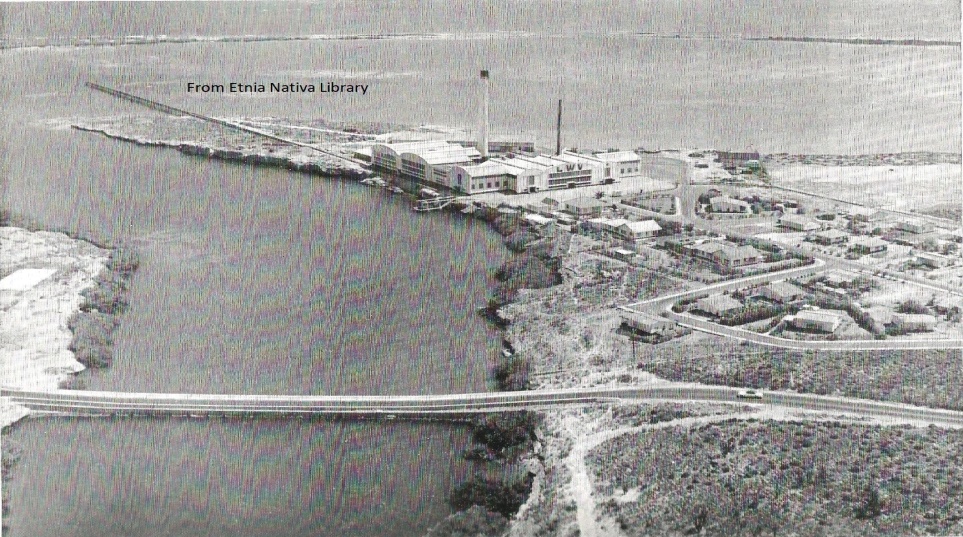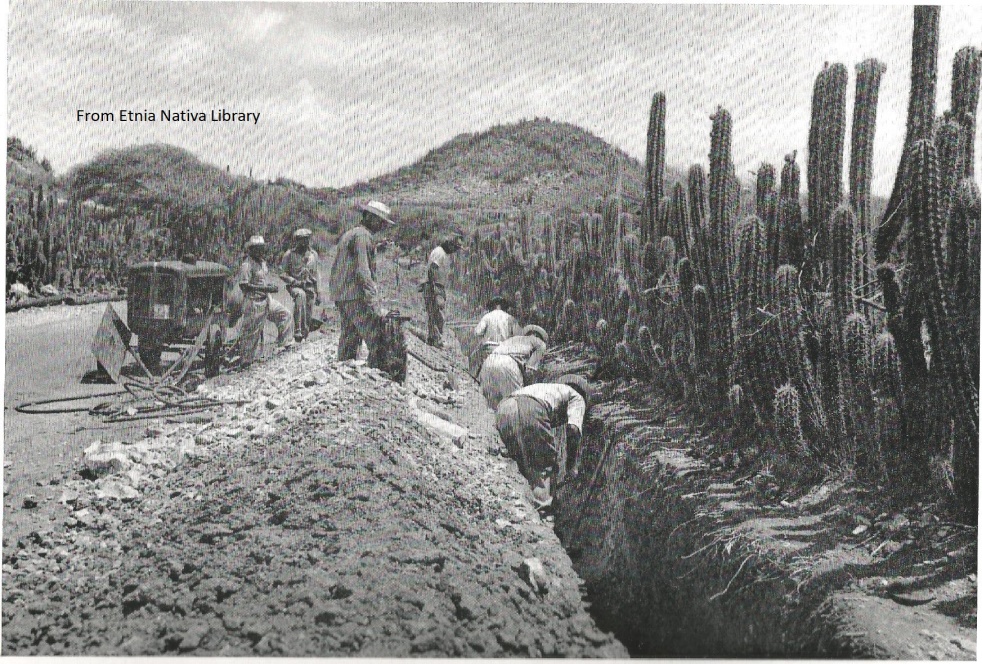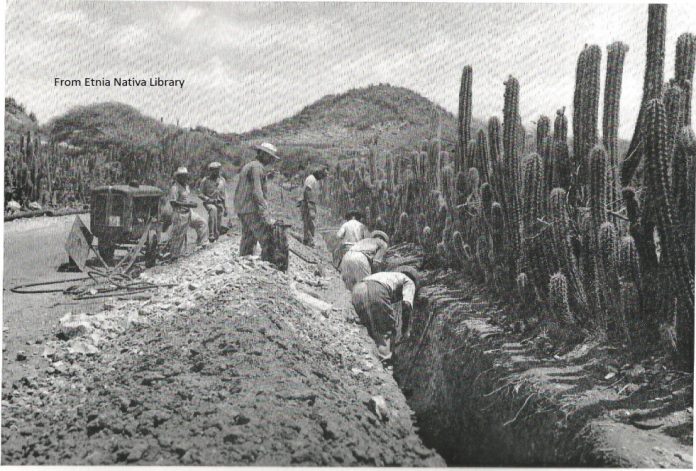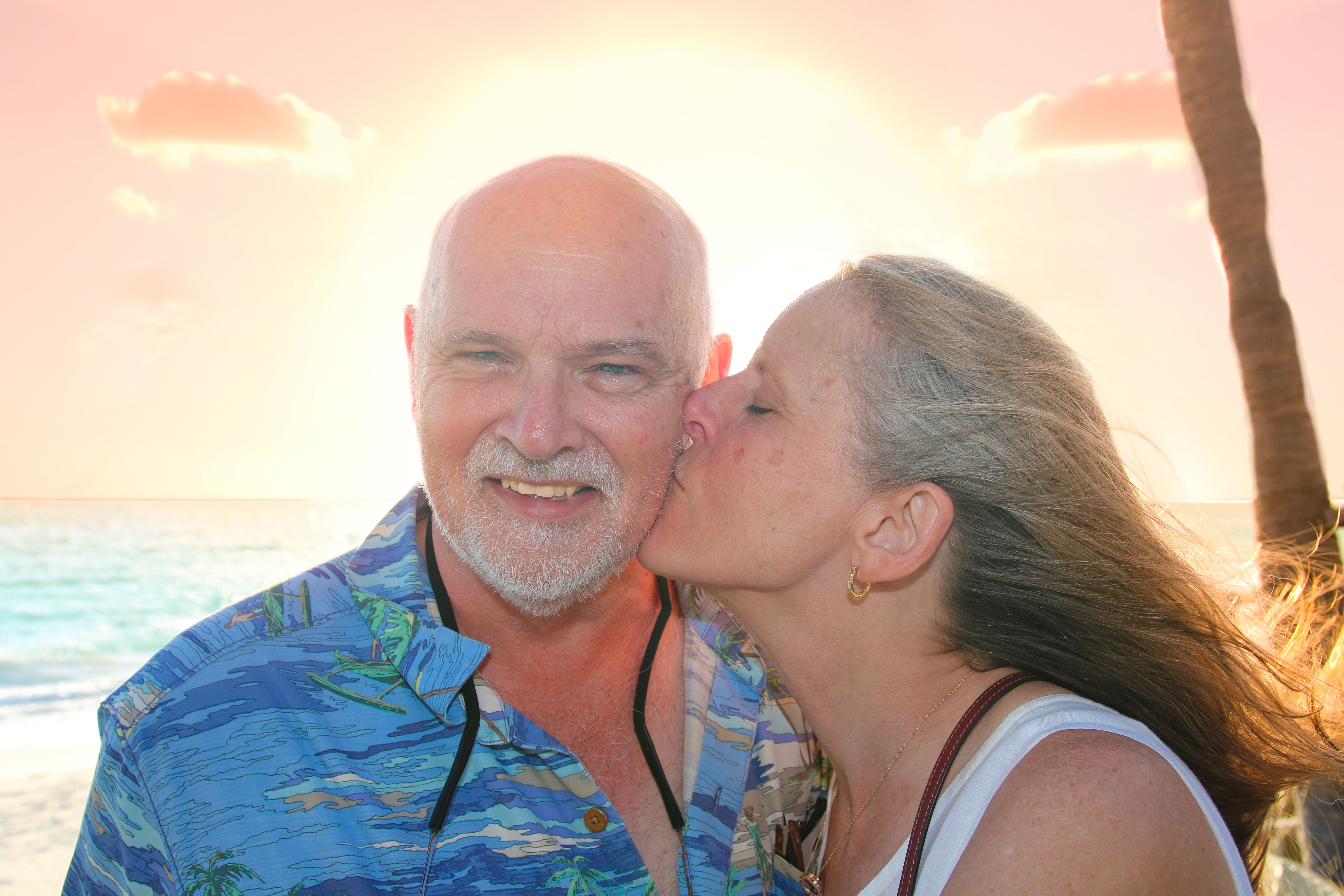Booking a magical and grounding experience at Etnia Nativa is easy
Our narratives have long emphasized the vital balance required in all that we do, especially on a small island like Aruba. For generations, the Aruban people thrived in a laid-back colonial existence, shaped by a unique blend of cultures. However, the neglect of our cultural heritage and the growing threats to our biodiversity has now reached critical levels.
This platform is dedicated to preserving and rediscovering native traditions, while exploring the true spirit of what it means to be Aruban, and reflecting on our history and identity.
In this episode, we continue to explore the historical evolution of drinking water on the island.
As explained in the previous episode, with the establishment of the oil refinery, finding a solution for the necessary supply of drinking water became crucial. Initially, it was decided to import drinking water from the United States. However, this soon proved insufficient, prompting the next phase in addressing the island’s water needs. The plan was to install a distilled water plant and a distribution system, which had already been successfully implemented on the neighboring island of Curaçao (Episode 216: Drinking Water in Aruba). Alongside the economic boom of that era, seawater desalination became the most important source of drinking water production.

It was then that the distillation plant and storage tanks were built in Balashi, with subsequent expansions ensuring that the entire island could be supplied with water. Thanks to this process, Aruba became an innovator in the water supply and distribution sector: pure, distilled seawater could reach every home through an urban distribution center, covering both drinking and domestic water needs. A year later, the evaporators began operating, first supplying Oranjestad and then San Nicolas.
The initial capacity of the storage tanks was soon increased to maintain constant pressure in the distribution lines during peak hours, with water towers built in Oranjestad and San Nicolas in 1939.

At that time, in the interior of the island, houses were widely dispersed, and as the cost of expanding pipes was very high, this had to happen gradually over the years. The districts of Santa Cruz, Noord-Paadera, Pos Chiquito, Savaneta, Brasil, Papillon, Santa Martha, Siribana, and Cashero were part of a main pipeline.
Today, drinking water is produced and distributed by WEB Aruba NV. The company pumps large volumes of water into storage tanks, which serve as buffers and are strategically located at high points across the island. The water is then pumped into the distribution system through a main header.
WEB Aruba NV has been providing water to the island since 1932, using a combination of Multi-Stage Flash Distillation and Seawater Reverse Osmosis to desalinate it.
In 1956, construction began on the massive Balashi seawater distillery. The facility cost 20 million Antillean guilders and was among the largest in the world. It also began generating electricity that same year. The distillery was officially opened by Finance Minister Juan E. Yrausquin in 1958. The factory produced its first batch of water just in time, as the old facility was unable to meet demand, which had to be rationed that year to a daily supply.
Over the course of ten years, from 1950 to 1960, daily production increased from 1,500 cubic meters to 10,000 cubic meters. The cost per cubic meter decreased, storage capacity expanded from 6,500 cubic meters to 80,000, and the number of homes served grew from 4,500 to 10,220. Only four homes in remote areas, such as one near West Point Lighthouse, were unserved. During this period, Aruba had the highest percentage of water connections in the world. Additionally, the length of the distribution system tripled.
If you enjoyed reading our stories and are interested in learning more regarding the true Aruban identity, we recommend you not wait until the last days on the island to book a visit to Etnia Nativa—the only “living museum of its kind in the Caribbean”. Fascinate yourself with this trend-setting experience. We have been here since 1994, co-founders of Aruba National Park, Archaeological Museum Aruba and board members of many Artisan Foundations. Etnia Nativa shares value, knowledge and connects you to the ancient island’s spiritual soul.
Whats App+297 592 2702 etnianativa03@gmail.com




















